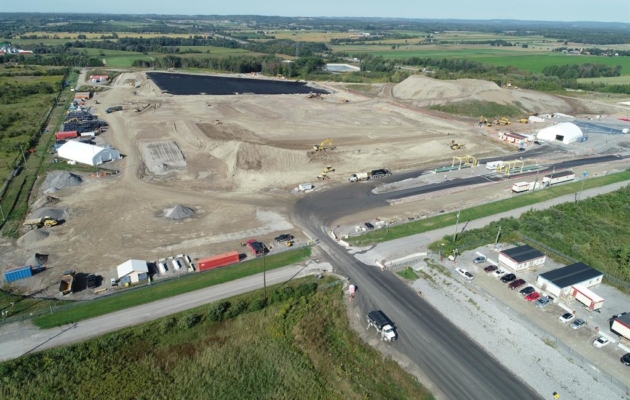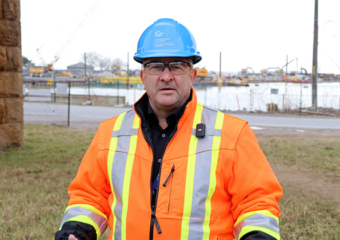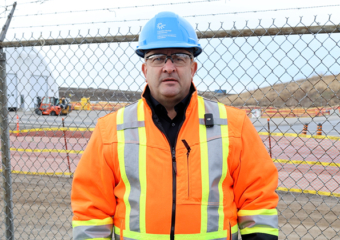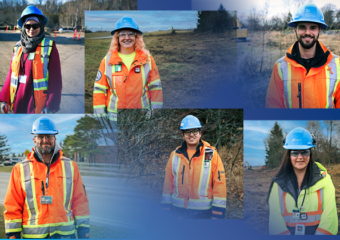The mound at the Port Hope Long-Term Waste Management Facility is taking shape. With three of four cells now accepting waste, the facility has already received almost 950,000 tonnes of low-level radioactive waste taken from various sites in Port Hope. Waste placement began in December 2017 when the first truckloads of contaminated soil were transferred into the new engineered aboveground mound.
“Construction and operation of this facility is complex with multi-step phases and processes. While we have had challenges dealing with the complexity and uniqueness of the project, we have also been able to help turtles find permanent homes, assist in archeological finds and in general be successful in storing this legacy waste,” said Jordan Wilson, Project Lead.
The site of the new Port Hope storage facility once housed the Welcome Waste Management Facility, where residuals from Eldorado was placed between 1948 and 1954. It was for this reason – that it already had waste placed there – that the current location of the new Port Hope mound was put forward to the federal government by the Township of Hope. Simultaneously, the Highland Drive Landfill was proposed by the Town of Port Hope as its preferred site. When the two communities were amalgamated in 2001, the Welcome site was determined to be more suitable for the safe, long-term storage of all the waste to be cleaned up from both communities.
To date, over 800,000 tonnes (~400,000 cubic metres) of this waste, referred to as on-site waste has been excavated from the footprint of Cell 2 (a and b) and placed in long-term storage. It is anticipated that about 450,000 cubic metres of waste is present on the site. The remaining on-site waste will be excavated, and testing to determine the extent of the excavation is ongoing. To facilitate the removal of this waste, further clearing and grubbing of the site is planned.
Cell 2a was declared ready to accept waste in early October 2019 and already has truckloads placed there. Construction on Cell 2b, the largest of all four cells, continues and this cell is expected to start accepting waste in 2020.
It is anticipated more than 1.2 million cubic metres of waste will be stored in the four cells in the engineered above-ground mound, lasting into 2024. “We are looking forward to when all four cells are accepting waste, so that we can ensure we are meeting our obligations”, added Wilson.
After all the waste has been placed in the cells, the mound will be shaped, closed and capped with top soil and sod as the final cover. With Cells 1 and 3 almost at capacity and the mound changing in shape after contouring, the height of the mound will be similar to what can be seen today. When it is completed the mound will be 164 metres above sea level (MASL). For comparison the Port Hope Water Tower is about 180 MASL. The completed mound will have radiation levels similar to anywhere else in Southern Ontario and the final decision on end-use plans rests with the Municipality of Port Hope.
As one of the largest environmental remediation projects, the PHAI is an environmental cleanup designed to help leave an honourable legacy for future generations.




